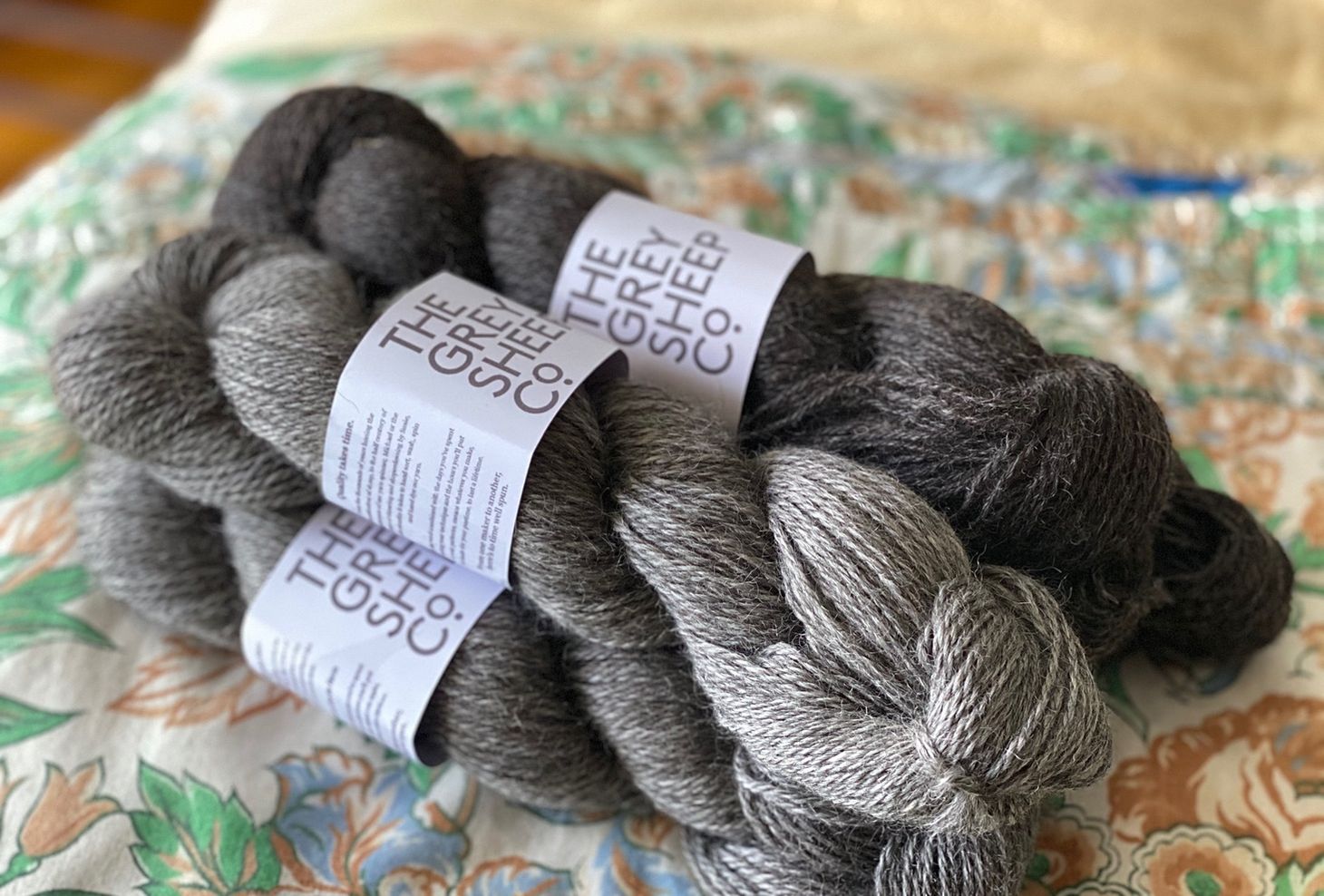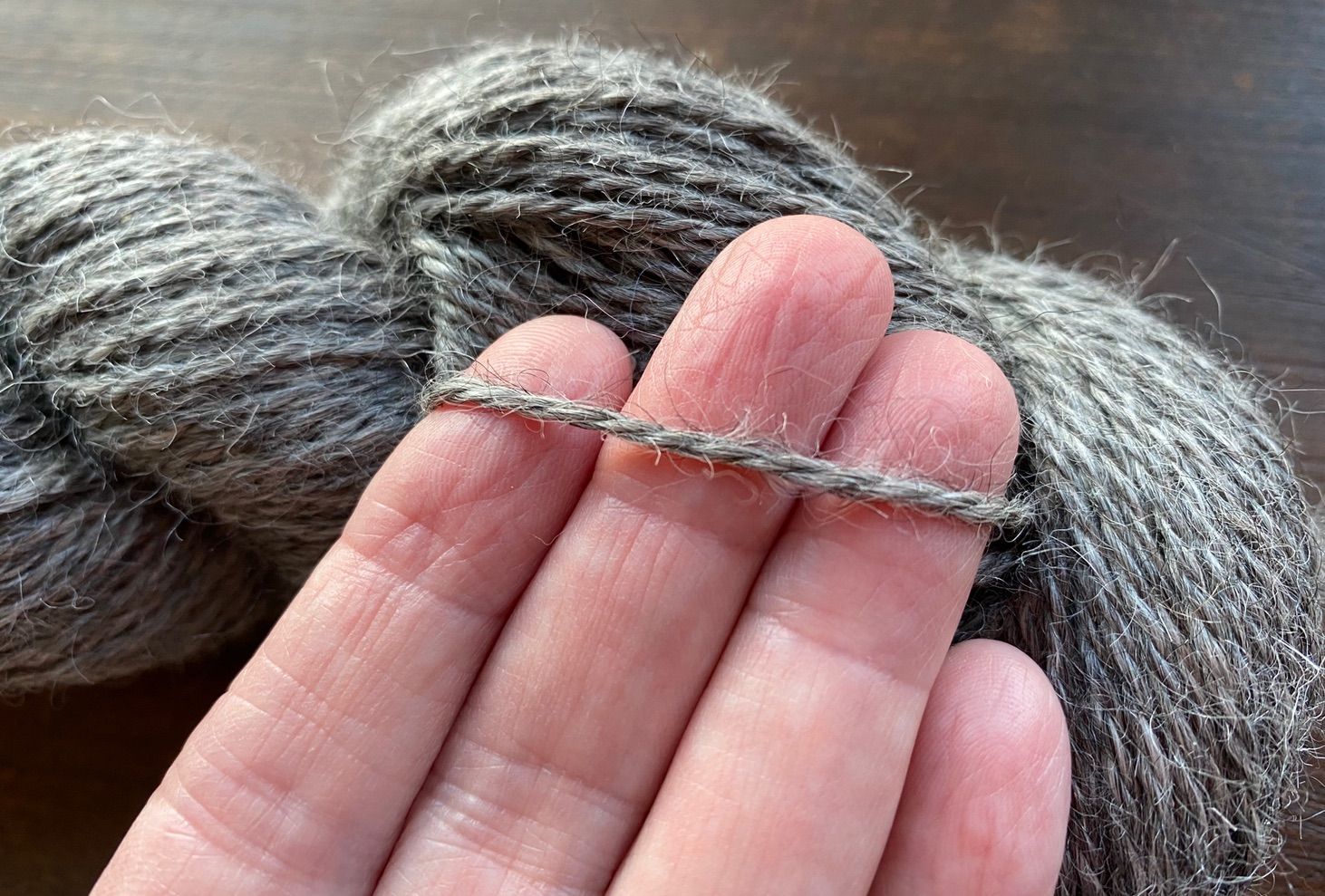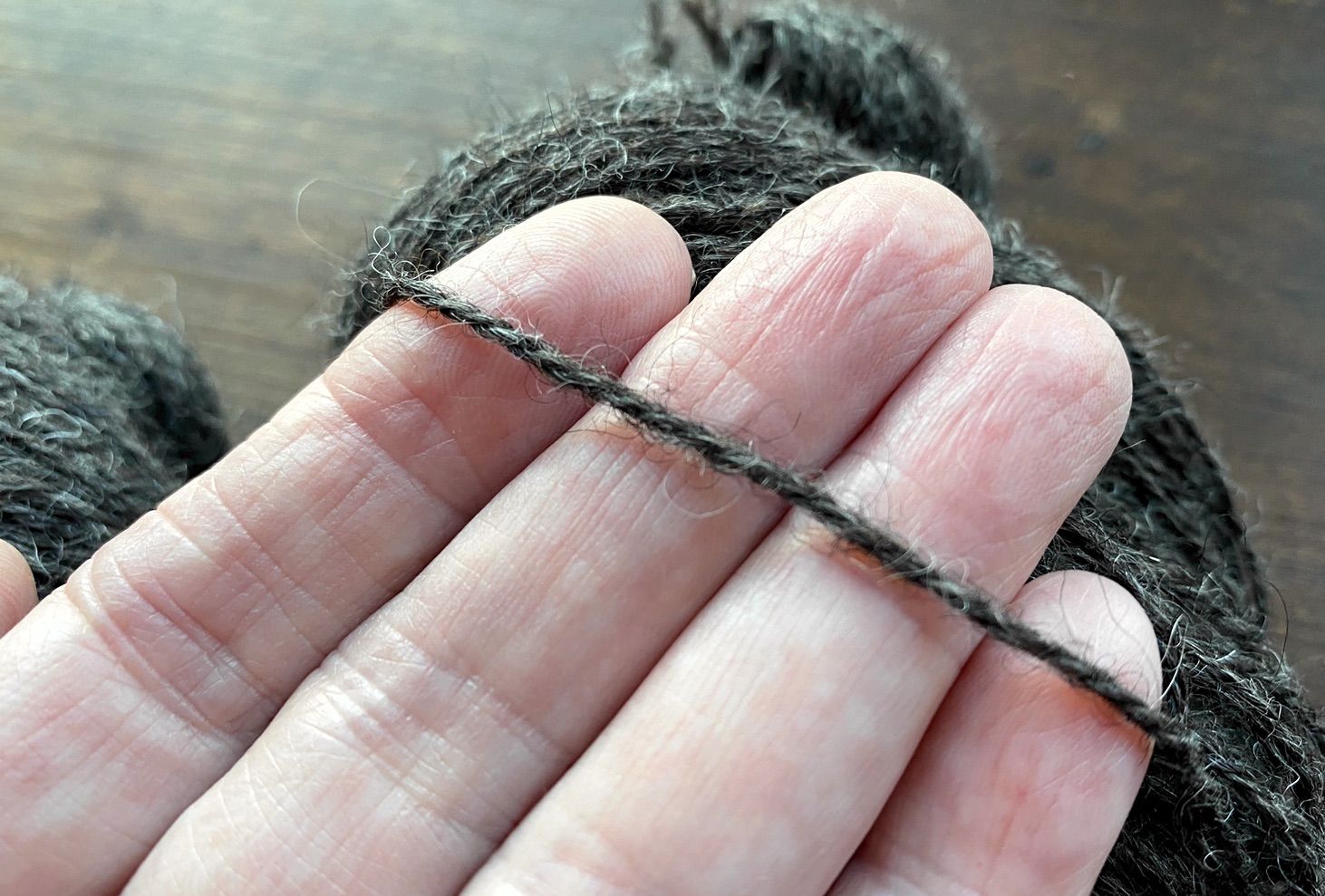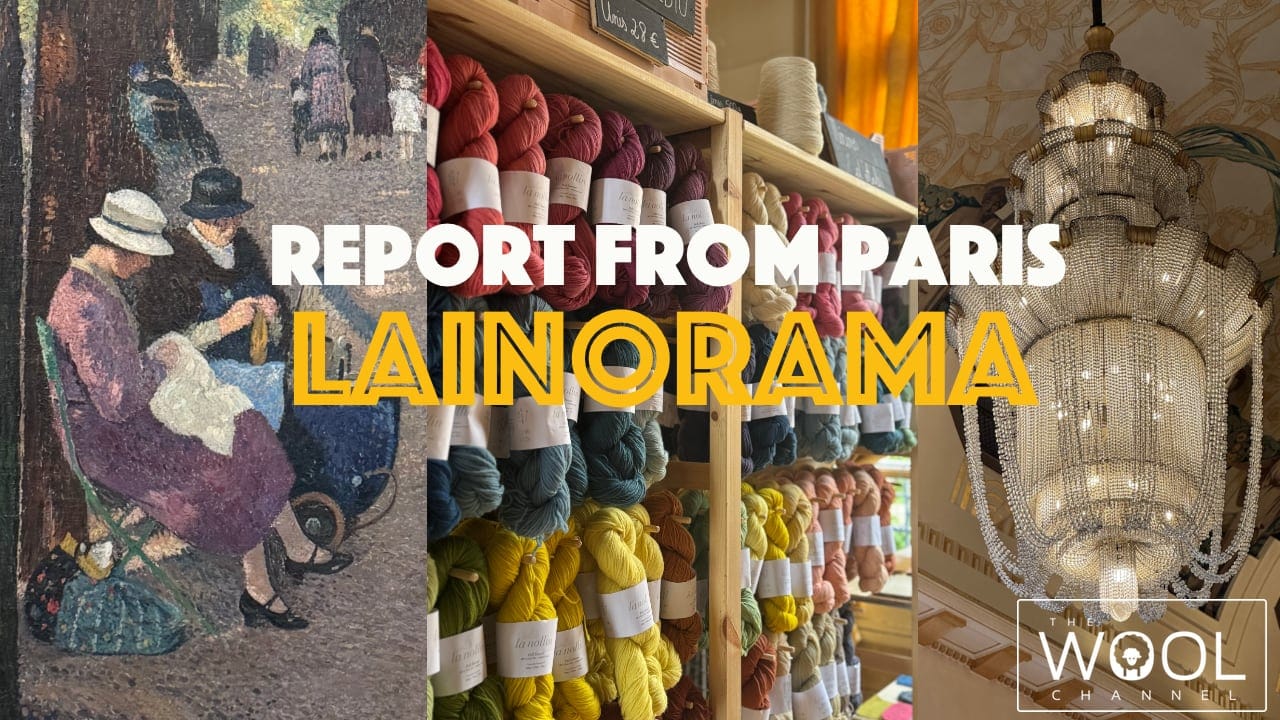A Mill of One’s Own

It's Earth Day, and I'm eager to tell you about a bundle of wooly goodness that just reached me from a farm in England. It is redolent of sheep. Not the spicy fragrance of spinning oil we often equate with wool yarn, but the bright and intoxicating notes of farm life. The sunshine, the soil, the trees and grass and, yes, the sheep themselves. Dare I say it, this yarn has terroir.
Except for a quick jaunt to be scoured, the fibers in this yarn never left a single 300-acre farm on the Surrey Hampshire borders. The yarn took two full years to come into being. The lambs were born, their wool coats grew, and they were shorn by the shepherdess herself. The fibers were skirted, spun, and skeined right there on the spot. By the very same people who raised the sheep. This yarn carries a rare and palpable sense of place.
The Way of Wool
By the time most wool reaches us, it's already logged countless miles away from the farm. It usually ventures to a warehouse to a scouring plant to a mill to a dyehouse. If it's yarn, it'll head to a shop or a farm next, and, finally, to the consumer. If it's a finished product, it makes even more stops. In the end, like a manuscript with many editors, some of the original voice has been lost along the way.
Some farms are happy to see the entire clip loaded up on a semi and driven off into the sunset. The yarn isn't their priority. But for those whose livelihood depends on the finished product, the mill is a critical link in the chain. Your choices are few, delays are many, and the finished results are entirely beyond your control.
Unless, that is, you spin it yourself.
The idea defies all logic of capitalism, where growth and efficiency and profitability are paramount. Make your own yarn and you return to the small and tangible and innately inefficient. But you also reclaim control over your supply chain and the finished product.
Where There's a Mill
How does one go about buying a mill? You have a few options. You can try to find salvage equipment from a bigger mill that went out of business. If you're very small, a cottage-scale Belfast Mini Mill setup may be all you need.
Or, you can plunk down the capital and buy new equipment from a reputable manufacturer like Pietro Ramella in Biella, Italy. When the check clears, a truck arrives and unloads several massive wooden crates. And that's it, you have your mill.
For Emma Boyles, that truck arrived on her UK farm in December of 2020, smack dab in the midst of a pandemic and Brexit. She and her husband Neil immediately set to work installing and learning how to use their shiny new Italian mill equipment. By April, they had their first skeins—of which I received four.
About Emma
Emma and Neil have owned Well Manor Farm since 2004. Sheep came soon thereafter, under the care of Emma's shepherdess friend Susie Parish. By the time I met her in 2011 at Knit Nation in London, she was selling yarn from her Shetland and Gotland flock under the Well Manor Farm label. The yarn market was still dominated by superwash Merino imports, and Emma and John Arbon were early outliers in the local, breed-specific wool movement that was about to come. Emma's yarn was, in fact, spun by John.
Well Manor Farm later became The Little Grey Sheep. It lost the "little" moniker last year and is now The Grey Sheep.

Great Expectations
It can take years to master mill equipment, to understand its nuances and deftly match them with the qualities of the fibers being spun. I've seen beautiful wool destroyed at the hands of new mill owners with the best of intentions but not yet enough experience.
When Emma told me her plans and asked if I'd like to see the yarn, I was apprehensive. It's a rare person who can master commercial-scale fiber farming and yarn manufacturing. I can count on one hand the number of people who've done it. But Emma is well on her way.
The Yarns
Gotland wool, with is wide micron swing, benefits from a deft hand at the skirting table. Toss everything together and the prickle of the 30+ micron adult fibers will dominate. But skirt carefully, as Emma and Susie have done, and you'll get a surprisingly slinky material that averages in the mid 20 microns.
Emma sent me two skeins each of two weights: the Gotland Aran in its natural somewhat heathered gray state, and the lighter-weight Gotland 4-Ply in a gorgeous chocolate brown. Both yarns are enticingly even and balanced.



Before the Aran could woo me, the dark brown 4-Ply hopped onto my thumb and became the beginnings of a center-pull skein. From there, it demanded to leap onto my hexagonal needles and to launch into a garter-stitch square that has since become a rectangle and is threatening not to stop until it becomes a scarf or the yarn runs out, whichever happens first. I can't stop knitting.



While I dream of how heavenly and well-wearing a sweater would be, I don't feel any great urgency to make one. My real pleasure comes just from being with this yarn. Holding it, feeling it slide through my fingers, watching it form loops on my needle and fabric in my lap.
At a time when overseas travel is impossible, this yarn is the next best thing. It's a wearable, scratch-and-sniff postcard of the British countryside.




